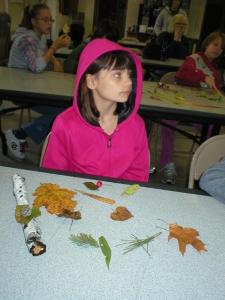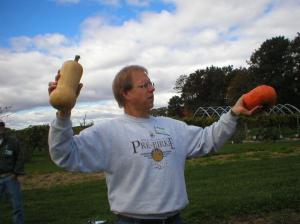The Editorial article by Lauralei Anderson in the paper September 8, 2010 was submitted to Happy Tonics, Inc. officers and board in OH, MA, VA and WI. We agreed to the following response to Lauralei Anderson’s Editorial.
Letter to the editor, Washburn County Register
In regards to the letter sent by Lauralei Anderson from Cumberland, we at the Monarch Butterfly Habitat would like to respond to her criticism calling the habitat “an overgrown railroad bed.”
A native habitat is completely different from a typical garden, park or planting. There are no tulips and marigolds in nice neat rows because all the plants in the habitat are native to Wisconsin. This is a prime example of a restored tall grass prairie whose plants are the same ones that covered Wisconsin when the Conestoga wagons passed through carrying the pioneers west.
It was the U.S. Fish and Wildlife Service that not only helped pick out the native seeds, but donated over $500 worth of seeds to the habitat and the Land and Water Conservation Department had a huge hand in the project also.
Native plantings always start out with common plants like the little and big blue stems which you call weeds. If the garden is healthy, the first native flowers begin to appear the third year. You mentioned in your letter that you saw some ‘scant black-eyed Susan’s, they are right on time. Within the next 5 years, more native flower species, the seeds of which were planted by professionals, will appear. Some native plants take years for their seeds to germinate and grow into plants.
Even though the habitat idea is new to many here in Shell Lake and the surrounding residents, it’s familiar to those who are familiar with Saulk County’s favorite son, Also Leopold and sites like Brighter Planet. The habitat has received grants from both organizations as well as numerous others that believe that if we don’t save the native plants for the two most important pollinators, the bees and butterflies, commercial crops and public and personal gardens will fail due to a lack of pollination. We will be starting to be official Wisconsin native seed savers this year, sending them throughout the United States.
Shell Lake is also on the direct floral corroder that runs from Canada to Mexico that offers food and rest to the millions of butterflies heading to their winter home in Mexico and yes, the butterflies often follow the highways, another reason for this perfect habitat site.
It’s often easy to criticize what we don’t understand, and this habitat was never meant to look like a ‘cute little garden,’ it’s a teaching tool that has already tied into Eco Tourism and we have given many tours this summer to a local audience as well as visitors from across our nation. The Monarch Habitat also sponsors Earth Day activities each year which encourage locals to buy locally.
Articles about the habitat have not only been published nationally, the habitat is also part of the international world with blog responders from 72 different countries who understand why it exists.
If you watch television, you will see the habitat featured on Discover Wisconsin three times during the next two years, starting March 2011. The habitat is all over their website and print material and calendars as well as the official Wisconsin Tourism Site.
All the beautiful little gardens you mentioned in your letter require constant up-keep from weeding to watering to fertilizing, to the applying of pesticides and for some, mowing.
The habitat is ‘green’ in more ways than one because native plants live with or without our help. The habitat leaves absolutely no carbon footprint.
We would encourage you to take a tour of this amazing place; to step back in history for a bit and enjoy the many kinds of butterflies that already visit the habitat daily.
Mary Ellen Ryall, Executive Director














